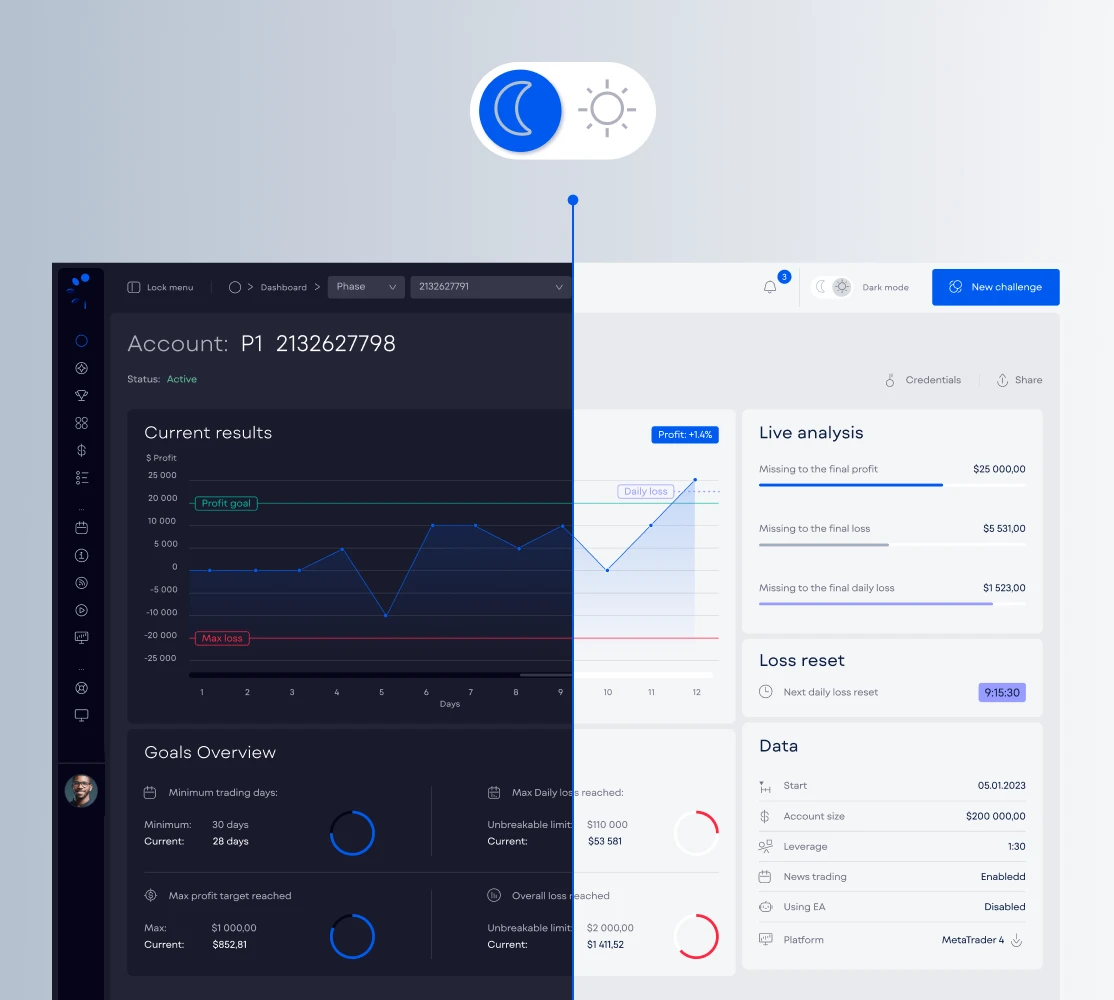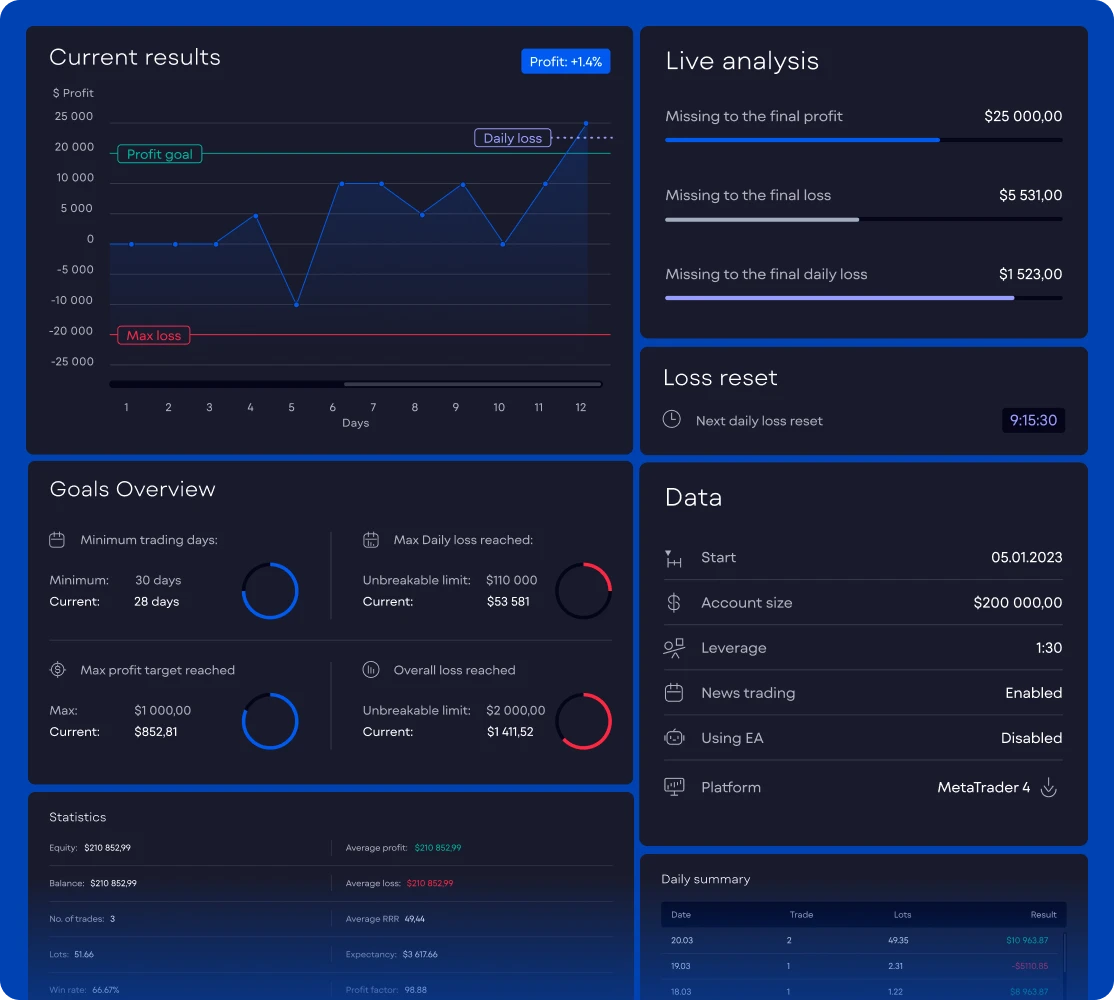
What is Prop Trading?
So, you want to get into trading but need the capital to fund your account? Or maybe you trade already but want more leverage to maximize your profits? Well, prop trading firms may be the solution you're looking for.
In simple terms, prop trading, short for proprietary trading, is when trading firms provide capital to good and verified traders to place trades and then take a cut of the traders' profits. It's a win-win situation - traders get access to more capital to trade bigger while firms earn a percentage of sometimes substantial trading gains.
Here, we'll break down exactly how prop trading works, and the benefits and risks involved. Whether you're new to markets or a seasoned pro, prop trading could take your trading to the next level.
What is Proprietary Trading?
Proprietary trading, or "prop trading" for short, is when a financial firm or bank uses its own money to trade stocks, bonds, commodities, or other financial instruments, instead of trading with their clients' money. It's like the firm is playing its hand in the high-stakes poker game of the financial markets.
So, prop trading differs from other types of trading in a couple of keyways. First, prop traders are not managing other people's money or making investments on a client's behalf. Nope, it's the firm's money on the line. Second, the firm gets to keep all profits (or losses) from the trades rather than earning a commission or fee.
This contrasts with other trading activities like brokerage services, where a firm executes trades for clients in exchange for transaction fees. Or asset management, where an investment company manages portfolios and investments for clients for a management fee.
With prop trading, traders analyze the markets, identify opportunities, and place trades using the firm's capital. So prop traders get to fully ride market waves in hopes of big payouts. Now that's some serious skin in the game!
How Proprietary Trading Works
The prop trading process starts with the firm itself - we're talking investment banks, hedge funds, or other financial institutions. These companies decide to allocate some of their capital (not client money) specifically for their proprietary trading desk to invest in the markets.
Why fork over their own money for trading? Because prop trading offers a chance for WAY higher profits...if the trades pay off. Rather than just earning commissions or fees like other trading activities, prop firms get to keep 100% of any gains they make. But that also means taking on 100% of losses when trades go south. High a risk, high-reward thing!
Now, the people making these trades are called proprietary traders. They're the ones analyzing the markets, identifying opportunities, and making the trades. They have access to sophisticated software and a wealth of information to help them make informed decisions. These traders can use a variety of strategies, like index arbitrage, statistical arbitrage, merger arbitrage, fundamental analysis, technical analysis, and more. When prop traders spot an opportunity, it's go time! They execute trades using the firm's capital, whether that's stocks, crypto, currencies, or other securities.
But here's the thing: with great power comes great responsibility. Prop traders are taking on significant risks since they're not managing client money. If their trades go south, it's the firm's money on the line.
Unlike hedge funds, where accountability rests with clients, proprietary traders are answerable solely to their firms. They're the ones riding the market waves, hoping to catch a big one. But remember, they're also the ones who'll wipe out if they get it wrong.
But it's not just wild gambling. Good prop traders manage risk to avoid blowing up the firm's money. The best prop traders bring in massive profits consistently. Those that don't? Well, they may need to update their resumes.
The firm then reviews the performance of its prop trading desk and allocated capital. Rinse and repeat! It's a constant cycle of analyzing, trading, assessing, and optimizing. When done right, prop trading prints money for the firm.
In short - firms provide capital, and good prop traders execute the actual trades. The traders take home a cut of the profits while the firm enjoys the rest.
How to Get Started in Prop-Trading
You're probably wondering, "How do I get into this prop trading gig?" Well, it's not as simple as just showing up and asking for a chunk of the firm's capital. There's a process, and it starts with what's known as a prop firm challenge.
You pay an entry fee to take part in a trading challenge, where you're given a demo account with a certain balance. Your mission, should you choose to accept it, is to trade that account and hit specific profit targets while staying within risk limits.
Sounds easy, right? Not so fast. These challenges are designed to test your trading skills to the max. You'll need to prove that you can manage risk effectively, keep your losses in check, and still turn a profit.
The evaluation process is rigorous and designed to weed out those who can't cut it. But it's also a fantastic learning experience. You get to trade in real-market conditions, use advanced trading platforms, and learn to manage risk effectively. And the best part? If you pass the challenge, you get to trade the firm's capital and keep a percentage of the profits.
Read more articles

In the lucrative world of forex trading, keeping yourself one step ahead of the market approach is a must for success. One indispensable tool for a trader is th
5.9.2024





